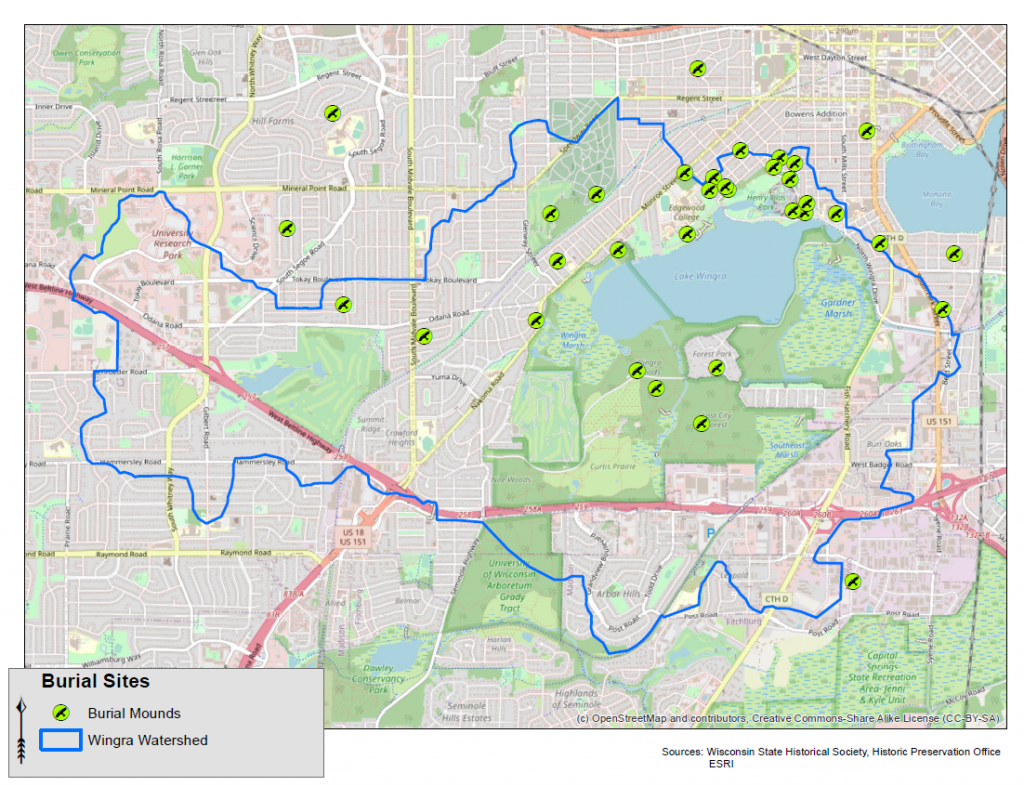In March, the City of Madison Board of Parks Commissioners voted to approve the Vilas Park Master Plan. During that process, the Ho-Chunk Nation, the Friends of Lake Wingra and others advocated for greater attention to the protection of the sacred burial mounds and archaeological sites within Vilas Park.
Parks Department Commits to Conduct Archaeological Survey of Vilas Park
Close to 70 people requested an amendment to the Vilas Park Master Plan requiring an Identification Survey of the park prior to any park feature planning or ground disturbing activities. At the final hearing, the Parks Department incorrectly informed the Board of Parks Commissioners this had been done. However, the following week, Parks Superintendent Eric Knepp sent a memorandum to the Board of Parks Commissioners correcting the record and committing to completing a Phase I Archaeological Survey.
Lake Wingra Effigy and Burial Mound Sites
Madison has more effigy mounds than any other city in the United States, and the Lake Wingra area, named Kichunkochheperrah in Ho-Chunk (“where the turtle rises up”), was known for the density and diversity of mounds surrounding its shores prior to the forced removal of the Ho-Chunk from their ancestral land.
Interested in learning more and viewing sacred mound sites? Friends of Lake Wingra Executive Director, Casey Hanson, and the Wisconsin Historical Society put together a map of the mounds within the Lake Wingra Watershed. “Each marker represents a site, rather than a single mound, and while many sites were composed of only a couple of mounds, some held dozens. The Lake Wingra area also contained a great diversity of mound forms. Most of the recorded mound types in Wisconsin were built in the Four Lakes region, making the mounds on our lakeshores some of the most diverse known,” says Dr. Amy L. Rosebrough, archaeologist in the State Historic Preservation Office and co-author of Indian Mounds of Wisconsin.
In the UW-Arboretum, there is a trail head marker off the Wingra Springs Lot, detailing some of the mounds overlooking Lake Wingra’s Big Spring and White Clay Spring, including a beautifully shaped bird flying north towards Lake Wingra. “It’s obvious there is almost always a relationship between the mounds and the water,” says Larry Johns, Oneida Nation mound expert.
Please remember to be respectful when visiting these sacred sites, stay on trails. “It’s very important to make sure these are preserved, and honor why they are here, and even marvel at them,” says Ho-Chunk Nation legislative representative Carly Lincoln, in the 2018 Wisconsin State Journal article linked here and above.

